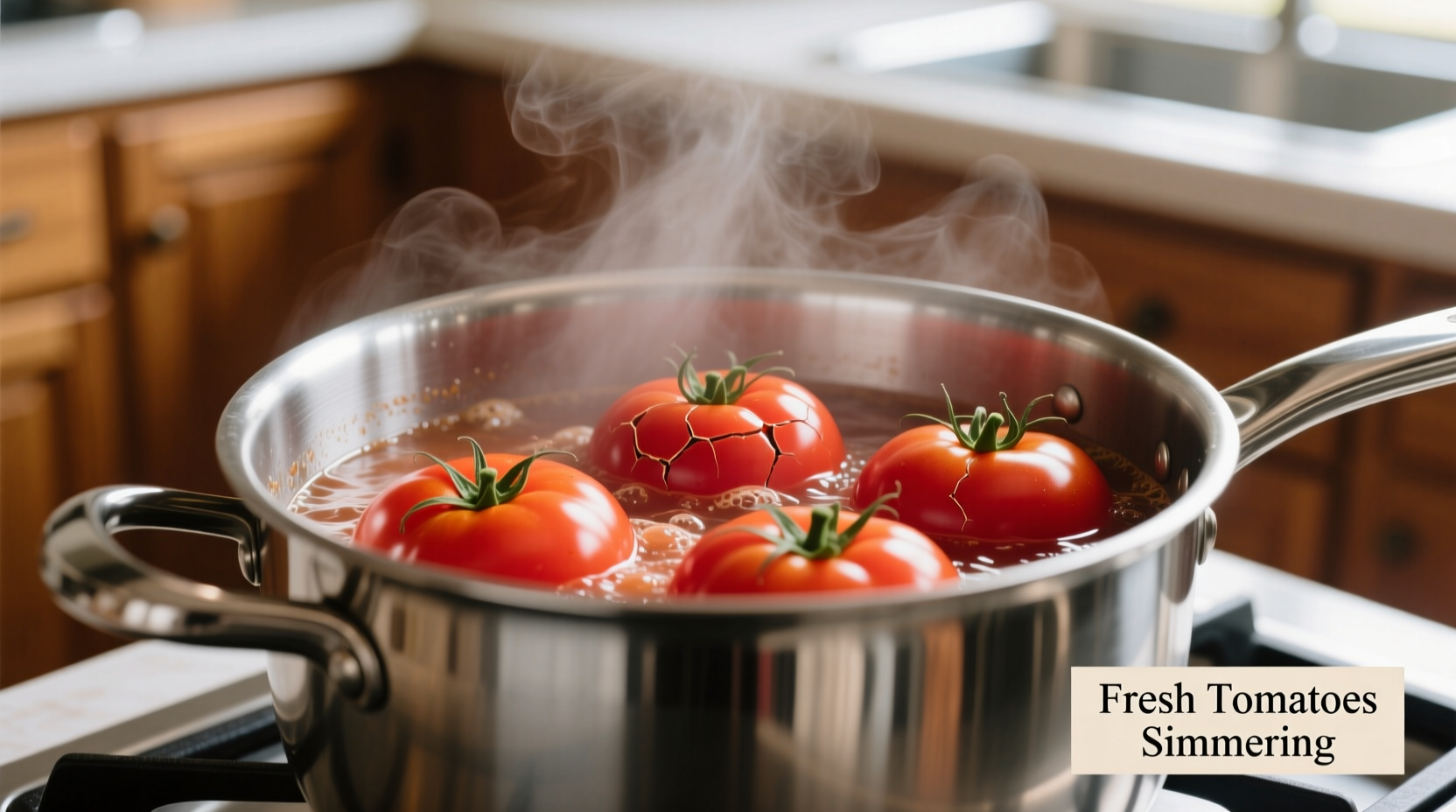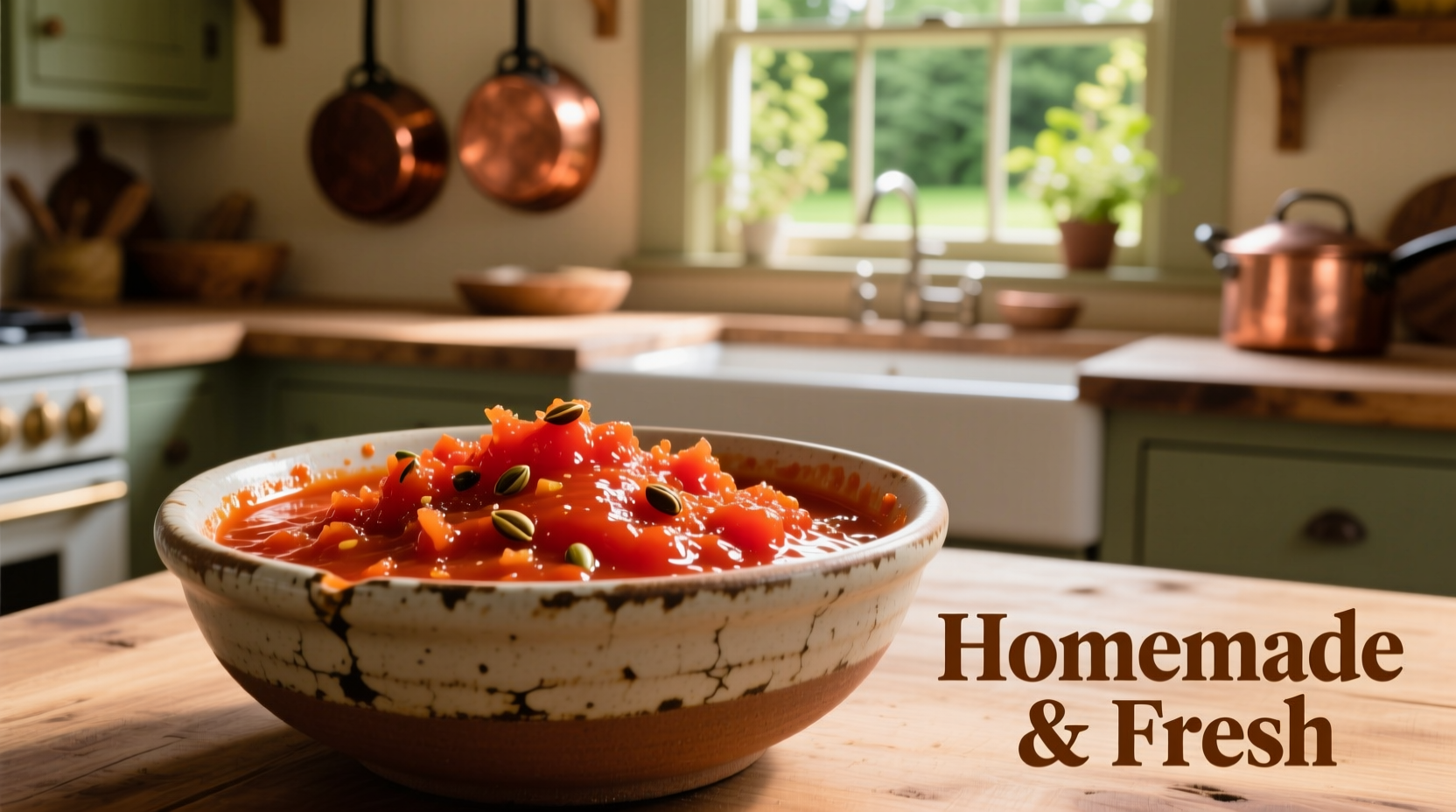Creating authentic tomato sauce from fresh tomatoes yields superior flavor, vibrant color, and customizable taste compared to store-bought versions. The essential process involves selecting ripe tomatoes, simmering with aromatics for 45-60 minutes, and proper storage techniques that preserve freshness for up to 5 days refrigerated or 6 months frozen.
Why Fresh Tomato Sauce Transforms Your Cooking
When you make tomato sauce from fresh tomatoes, you unlock complex flavor profiles that canned alternatives simply can't match. The natural sugars in vine-ripened tomatoes caramelize during cooking, creating depth that transforms pasta dishes, pizzas, and stews. According to USDA nutritional data, fresh tomato sauce contains 20% more lycopene—a powerful antioxidant—than processed canned versions, as excessive heat during commercial canning degrades this beneficial compound.
| Characteristic | Fresh Tomato Sauce | Canned Tomato Sauce |
|---|---|---|
| Lycopene Content | Higher (up to 20% more) | Reduced due to processing |
| Sodium Level | Controllable (0-150mg/serving) | Typically 300-500mg/serving |
| Flavor Complexity | Bright, customizable | Flattened by processing |
| Preservatives | None | Often contains citric acid |
Your Tomato Selection Strategy
Not all tomatoes work equally well for sauce. Roma (plum) tomatoes remain the professional chef's choice with their thick flesh, fewer seeds, and lower water content—yielding a naturally thicker sauce with less reduction time. When Romas aren't in season, combine meaty varieties like San Marzano or Amish Paste with a small portion of juicy heirlooms for balanced acidity. The FDA recommends selecting tomatoes without blemishes or soft spots to prevent spoilage during preparation.

Step-by-Step Cooking Process
Follow this chef-tested method for consistently excellent results:
Preparation Phase (15 minutes)
- Wash and quarter 2.5 lbs ripe tomatoes (remove tough cores)
- Prepare aromatics: 1 diced onion, 4 minced garlic cloves, 2 tbsp olive oil
- Gather flavor enhancers: 1 tsp sea salt, 5 fresh basil leaves, 1 tsp sugar (optional)
Cooking Timeline & Flavor Development
Understanding this progression ensures perfect texture and taste:
- 0-10 minutes: Sauté aromatics until translucent (builds flavor foundation)
- 10-20 minutes: Add tomatoes and initial seasonings (acidity begins developing)
- 20-40 minutes: Simmer uncovered, stirring occasionally (water content reduces by 40%)
- 40-60 minutes: Final thickening stage (sauce coats spoon when ready)
Finishing Touches
Remove from heat and either blend with immersion blender for smooth texture or leave chunky. Stir in fresh basil and adjust seasoning. For restaurant-quality results, let sauce rest off-heat for 15 minutes before serving—this allows flavors to fully integrate.
Troubleshooting Common Issues
Even experienced cooks encounter these challenges:
- Too watery: Continue simmering uncovered, or add 1 tbsp tomato paste to thicken
- Too acidic: Balance with 1/2 tsp sugar or grated carrot during cooking
- Bitter notes: Remove any green spots from tomatoes before cooking—they contain bitter compounds
- Flat flavor: Add umami boosters like 1 tsp fish sauce (undetectable but enhances depth)
When Fresh Isn't Best: Context Boundaries
While fresh tomato sauce shines in most applications, certain situations favor quality canned alternatives:
- Dead of winter when tomatoes are shipped long distances (December-February in Northern Hemisphere)
- Recipes requiring extremely consistent acidity (like pressure-canned sauces)
- Commercial food service needing batch consistency
- Emergency cooking when fresh tomatoes aren't available
The National Center for Home Food Preservation confirms that properly canned tomatoes maintain nutritional value comparable to fresh when processed at peak ripeness.
Storage Methods That Preserve Freshness
Maximize your sauce's shelf life with these professional techniques:
- Refrigeration: Store in airtight container for up to 5 days (top with olive oil layer to prevent oxidation)
- Freezing: Portion into ice cube trays, then transfer to freezer bags (keeps 6 months)
- Water bath canning: Process pint jars 40 minutes for shelf-stable storage (follow USDA guidelines)
Flavor Variations Worth Trying
Customize your base sauce with these chef-approved additions:
- Arrabbiata: Add 1/2 tsp red pepper flakes during sauté phase
- Vodka sauce: Stir in 1/4 cup vodka after tomatoes have reduced by half
- Rustic puttanesca: Finish with capers, olives, and anchovy paste
- Roasted garlic: Substitute raw garlic with 1 whole roasted garlic bulb
Frequently Asked Questions
Do I need to peel tomatoes for fresh tomato sauce?
Peeling is recommended for smooth sauces as tomato skins become tough during cooking. Score an 'X' on the bottom, blanch in boiling water for 30 seconds, then transfer to ice water—the skins will slip off easily. For rustic sauces, you can leave skins on and blend thoroughly.
How can I thicken fresh tomato sauce without altering flavor?
The best method is continued simmering to reduce water content. Alternatively, add 1-2 tbsp tomato paste during cooking—it concentrates flavor while thickening. Avoid flour or cornstarch which can create undesirable texture in tomato-based sauces.
Can I use unripe tomatoes for sauce?
Unripe tomatoes lack sufficient sugar and have higher acidity, resulting in harsh-tasting sauce. If you must use them, balance with 1-2 tbsp sugar and add grated carrot for natural sweetness. For best results, wait until tomatoes develop full color and slight softness.
Why does my fresh tomato sauce taste bitter?
Bitterness usually comes from green spots near the stem (containing solanine) or overcooked garlic. Remove all green portions before cooking and add garlic during the last 5 minutes of sautéing. A pinch of sugar or grated carrot balances bitterness without making sauce sweet.
How long does fresh tomato sauce last in the refrigerator?
Properly stored in an airtight container with a thin layer of olive oil on top, fresh tomato sauce keeps for 4-5 days in the refrigerator. Always use clean utensils when serving to prevent contamination. For longer storage, freeze in portion-sized containers.











 浙公网安备
33010002000092号
浙公网安备
33010002000092号 浙B2-20120091-4
浙B2-20120091-4